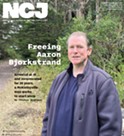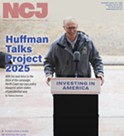'Bringing Balance Back'
Coastal Commission approves Wiyot plans to restore ceremonial structures on Tuluwat Island
By Thadeus Greenson [email protected] @ThadeusGreenson[
{
"name": "Top Stories Video Pair",
"insertPoint": "7",
"component": "17087298",
"parentWrapperClass": "fdn-ads-inline-content-block",
"requiredCountToDisplay": "1"
}
]
The Wiyot Tribe's plans to restore ceremonial structures on Tuluwat Island took a big step forward this month, when the California Coastal Commission voted unanimously to approve a coastal development permit amendment, clearing the path for construction.
The project will be implemented in three phases, with the first including construction of two ceremonial dress houses and a temporary ceremonial dance wall, as well as construction of a temporary dock that can be used to aid construction and during ceremonies. Phase two will see the installation of a vault toilet on the site, while the third phase will include the demolition of an existing shed and construction of a dining facility in its footprint. The entire project is aimed to support the tribe's annual World Renewal Ceremony, as well as other ceremonial events.
The largest of three islands in Humboldt Bay, the 280-acre Tuluwat Island is a sacred place for the Wiyot people, home to two pre-contact villages, including the site of its annual ceremony to restore balance to the universe. The island was also the site of one of the most brutal atrocities committed amid an attempted genocide of Native people that was filled with horrors, when as many as 300 Wiyot villagers — mostly unarmed women, children and elders — were slaughtered in February of 1860 by militiamen who raided the island in the dead of night, interrupting the annual World Renewal Ceremony.
Construction of the traditional ceremonial buildings on the site is the latest step in the tribe's efforts to heal the island and the world.
"It's such a great project," Coastal Commission Chair Caryl Hart said of the tribe's plans to construct historical ceremonial structures on the site, using the tribe's traditional plank redwood design. "After everything that's happened on that site, all the tragedy, to see this rebirth hand what the Wiyot Tribe is doing there is just absolutely so uplifting."
Wiyot Tribal Administrator Michelle Vassel says the tribe's plans have not changed since first imagined in 1999, when it purchased 1.5 acres of the island from the city of Eureka for $106,000, to be followed by the city then returning 40 acres of the island to the tribe in 2004 and, finally, repatriating the city's entire 200-plus acre holding on the island in 2019.
"We have been implementing the Tuluwat Ecocultural Restoration Plan in stages for 25 years now," Vassel says. "We work in stages as funding and other resources come together."
During a brief staff report at the commission meeting, North Coast District Supervisor Tamara Gedik noted the island that sits just north of Eureka and straddles State Route 255 is home to significant archeological and cultural resources. She offered a brief history of the site, noting that after the slaughter in 1860, the island was used as a shipyard for decades and left contaminated. After taking ownership of a portion of the island, the Wiyot Tribe immediately set about an environmental cleanup, partnering with the Environmental Protection Agency in a restoration effort that saw 1.5 tons of nonhazardous materials removed from the island, as well as the cleanup and capping of a toxic site. (With the cleanup complete, the tribe finished the World Renewal Ceremony that had been interrupted by the massacre in 2014.) Gedik explained the tribe's plans to use traditional building methods and natural materials to build most of the proposed structures, saying staff recommended approval with conditions that the tribe create and implement a wastewater management plan and agree to remove the vaulted toilet if it becomes threatened by coastal hazards.
During public comment, former Wiyot Tribal Chair and current Tribal Historic Preservation Officer Ted Hernandez reiterated the tribe's request that the commission forgive its $7,300 application fee so the tribe could instead spend its limited funds on the project "to rebuild these spiritual dwellings of the Wiyot people."
"Our role is to always take care of the land and the water that we sit on," Hernandez told the commission. "The Wiyots have been here since time immemorial, and our main job is protecting our land and our resources."
When the matter came back to the commission — with North Coast Commissioner and Third District Humboldt County Supervisor Mike Wilson having recused himself, saying he formerly served as a manager for the project's environmental review — there was little discussion as the commission moved to approve the permit modifications and direct staff to forgive the application fees.
"I'll just say that I love this project," one commission piped in before the votes, though it was unclear which.
The commission's vote also allows the tribe to erect up to nine informational signage stands on the site, which Vassel says will offer a history of the island — from Frederick Robert Gunther's first efforts to develop it for use by white people, when he created a series of dikes and levees that allowed it to be used for agricultural uses, livestock and eventually lumber mills, to the tribe's cleanup and restoration work — as well as information on its ecology and cultural significance. Each of the signs consists of a color display set in wooden framing, which is carved with eels.
The city of Eureka's decision to return the island to the Wiyot Tribe, the culmination of years of lobbying by tribal elders, was seen as historic in the Landback movement, the first known instance of a local government returning property to a tribe whose unceded land it governs.
"It seems to be me this could be a shining example of what's possible," Bo Anderson, the director of the Native American Law Center at the University of Washington School of Law, told the Journal at the time, adding that while there were documented cases of private landholders, nonprofits and the federal government returning land to tribes, he knew of no precedent for a local municipality having done it absent a lawsuit.
Five years later, restoration work continues, Vassel says, noting that the Redwood Community Action Agency continues to do contract work for the tribe to treat invasive spartina through mitigation funding from Caltrans. She says the tribe gets a lot of questions about that when people see work being done out in the island.
And that work will soon enter a new stage, with the tribe eager to restore the ceremonial infrastructure for its World Renewal Ceremony.
"By allowing us to build these structures, we're allowed to bring back the World Renewal Ceremony, which is bringing balance back into the world," Hernandez told the commission. "And that's what we need today. We need to bring balance back to this world so we can get rid of the sicknesses and all of the hatred that's going on in this world today."
Editor's note: This story was updated from a previous version to correct an error regarding Commissioner Mike Wilson's previous involvement with the Tuluwat Island restoration project. The Journal regrets the error.
Thadeus Greenson (he/him) is the Journal's news editor. Reach him at (707) 442-1400, extension 321, or [email protected].
more from the author
Latest in News
Readers also liked…
-
'To Celebrate Our Sovereignty'
Yurok Tribe to host gathering honoring 'ultimate river warrior' on the anniversary of the U.S. Supreme Court ruling that changed everything
- Jun 8, 2023
-
Pride in Full Stride
- Jun 29, 2023

































